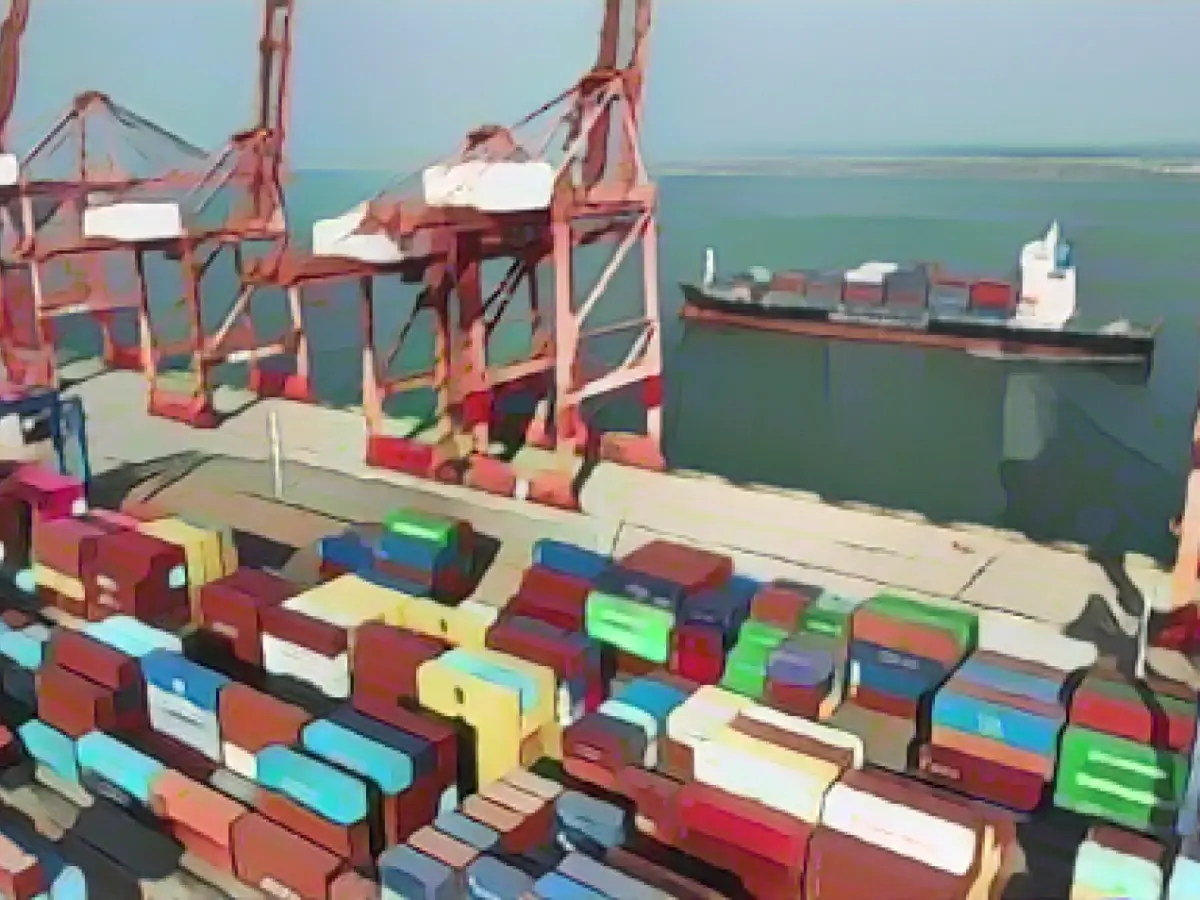Strange Boost in Chinese Exports to Russia in November's Chilly Climate
The financial hardships and inflation hitting Europe and North America particularly hard have led to a slump in demand for Chinese goods. As per the data, this gloomy scenario continued into November: exports to the USA were 13.8% lower than the previous year, while exports to Europe dipped by 11%. Unbelievably, exports to Russia soared by an astonishing 50.2%.
Beyond the economic situation in Western buyer nations, geopolitical tensions with the USA are also affecting Chinese foreign trade. The EU is also attempting to lessen its reliance on China or diversify its supply chains.
Economist Zhiwei Zhang from Pinpoint Asset Management cautiously observes, "Despite an improvement in exports, it's uncertain if exports will significantly contribute to growth next year." China, thus, needs to focus on domestic demand as its primary growth engine.
However, China's imports also took a hit in November. Exports had plummeted for eleven consecutive months before rebounding in October. With a 0.6% decline, the downturn persisted, suggesting a weak phase for both domestic consumption and Chinese industry.
A Closer Look at the Russia-China Connection
Several reasons contribute to the surprising surge of Chinese exports to Russia, despite economic challenges and geopolitical tensions with the USA and EU:
- Western Sanctions on Russia: The economic sanctions imposed by the EU, the US, Canada, and other nations against Russia have significantly limited the flow of goods and capital to Russia, prompting a substantial increase in Russia's dependence on China for consumer and industrial goods.
- China as a Supplier: China has emerged as the main supplier of various consumer and industrial goods to Russia. In the first ten months of 2025, China accounted for approximately 34% of Russia's foreign trade, up from 18% in 2023. This increase is primarily due to China's privileged access to the Russian automotive market and its significant role in supplying oil, coal, and natural gas exports.
- Infrastructure Developments: Infrastructure developments, such as the China-Russia Heihe-Blagoveshchensk highway bridge and the Tongjiang Railway Bridge, have boosted agricultural trade between the two nations. Moreover, the construction of a grain terminal in Zabaikalsk near the Chinese border has enhanced the loading capacity for agricultural exports.
- Energy Trade: The majority of Russia's trade is centered around the energy sector. In 2025, Russia exported 71 million tonnes of coal, 90 million tonnes of oil, 7.5 million tonnes of LNG, and 20 billion cubic meters of natural gas to China. The energy trade between the two nations has witnessed a significant upward swing, with Russia's energy exports to China surging to $50 billion in the first half of 2025, representing a 5% increase over the previous year.
- Strategic Partnership: The strategic partnership between Russia and China has been reinforced through various agreements, including a joint development plan outlining key areas of Russia-China economic cooperation until 2030. This plan encompasses boosting trade and investment, developing interconnected logistics, expanding the use of national currencies in trade, strengthening energy cooperation, and enhancing industrial cooperation.
- China's Economic Leverage: China's economic sway over Russia is substantial, as more than a third of Russia's exports are directed at Chinese markets. This leaves Russia at a disadvantage, making it vulnerable to shocks in the Chinese economy or alterations in Chinese legislation. China's disinterest in long-term investments with Moscow and its preference for engaging with large cities rather than investing in Russia's Far East further underscores this economic advantage.
Navigating the Fiscal Seas
The continuing geopolitical tensions between China and the USA have posed additional challenges to the Chinese export economy, which has been impacted by rising inflation in both North America and Europe. Experts suggest that the high dependence of the Chinese economy on exports could negatively impact China's economic growth in the future. Therefore, efforts to diversify the economy and boost domestic demand are becoming increasingly crucial.
Faced with these challenges, China is seeking to deepen its economic ties with Asian and African countries, aiming to offset the impacts of strained relations with Western nations. Recently, numerous multinational corporations have announced plans to transition their manufacturing bases from China to Southeast Asia, seeking to reduce their dependence on the Chinese market and escape rising inflation, labor costs, and other economic factors that had previously made China an attractive export hub.
In conclusion, despite the economic challenges and geopolitical tensions, China has managed to find a lifeline in the form of the Russia market. The strategic partnership, energy trade, market opportunities created by Western sanctions, and China's diversification strategy have contributed to this surprising surge in exports to Russia. Navigating the unpredictable waves of the global economic landscape will continue to be critical for China's future growth and success.








